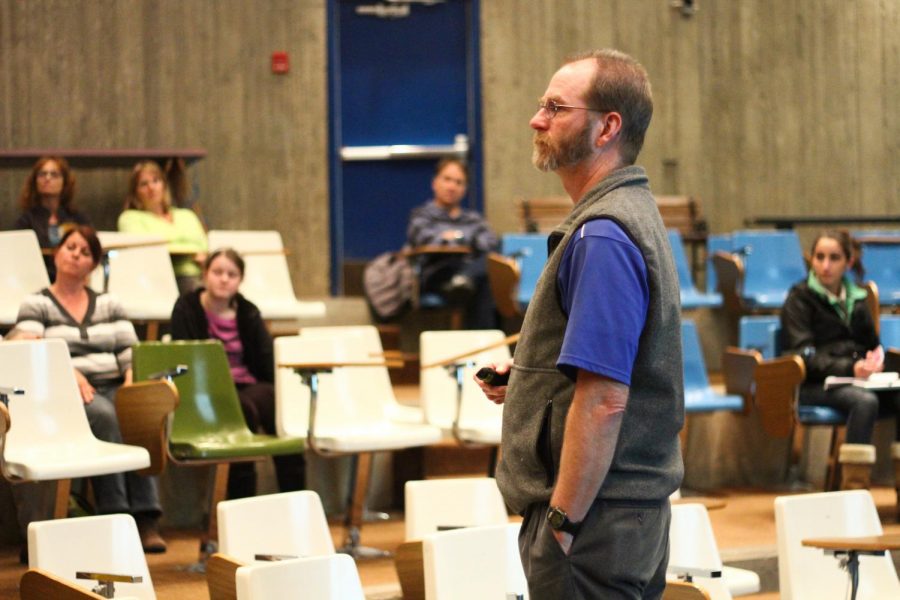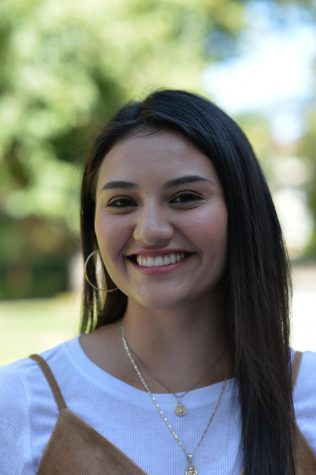Local school district receives funding to test, fix lead issues
State health department recommends replacing faucets above certain level
COLT FETTERS | DAILY EVERGREEN
Joseph Thornton, Pullman School District operations director, discusses the lead pollution in school water supplies. This is the first time the district has tested fixtures in schools.
April 15, 2019
A water tap in Sunnyside Elementary was found to have lead levels of 60 parts per billion (ppb), which is greater than the Environmental Protection Agency’s recommended maximum of 15 ppb.
Joseph Thornton, director of operations for the Pullman School District (PSD), said they volunteered to have their fixtures tested for lead by the Washington State Department of Health.
Bruce Speight, state director for the Environment Washington Research and Policy Center, said the state provided some funding in 2017 and allowed some schools to test their water, but there was not enough funding for all schools in Washington to do so.
“If they’re finding lead, there’s no requirement that they do anything, and that’s a problem,” Speight said. “We should have a requirement that [schools] remediate when lead is found … we should be proactive in acting to protect our kids from lead.”
Thornton said the district received funding from the voluntary program, which allowed the district to test their fixtures for the first time. They volunteered to test for lead two years ago when the state had funds available for testing, but they were not selected at that time.
All the schools in the PSD were tested in 2018, and some fixtures in Sunnyside Elementary School and Lincoln Middle School were found to have lead levels above 9 ppb, he said.
The Washington State Department of Health recommends that taps with a lead level above 9 ppb be replaced, Thornton said. If lead levels are at 9 ppb or below, they recommend routinely flushing the faucet as a standard protocol.
“We’ve replaced all fixtures that we were recommended to be replaced by the Washington Department of Health, so all the fixtures are compliant with that code,” Thornton said.
Lead levels above 9 ppb were not found in every fixture in the PSD, he said, which indicates that the problem was not the plumbing or supply pipes, but the fixture itself.
Speight referred to House Bill 1860, which would require schools to install filters on taps where lead levels are above 5 ppb and replace parts with lead contamination. The bill also aims to develop a consistent testing plan, have transparency with lead testing results and shut off taps where lead exceeds 5 ppb.
“The state can’t pass that bill and expect a school district to figure out a way to pay for it on their own,” Thornton said. “They’ve got to fund it.”
Speight said a report released on February 2019 by Environment Washington found that 97 percent of 199 preschools and schools had at least one tap that tested for lead at 1 ppb or greater.
He said the report looked at a number of factors including testing protocols, remediation actions to get lead out of the water and transparency about lead findings. Washington has no requirements for remediation, he said.
Washington Environment has been advocating for a standard of 1 ppb, Speight said.
Speight referred to the American Academy of Pediatrics (AAP) and said that the standard ppb level should be 1 ppb because if lead is detected, action should be taken because there are no safe lead levels.
The AAP called for stricter regulation and expansion of federal resources, according to the AAP website. The organization called for regulations, including new federal standards to define and test for lead and ensuring that water fountains in schools do not exceed lead above 1 ppb.


















